The Apple iPhone 11, 11 Pro & 11 Pro Max Review: Performance, Battery, & Camera Elevated
by Andrei Frumusanu on October 16, 2019 8:30 AM ESTCamera - Daylight Evaluation Continued
We continue on with more HDR heavy shots as well as going into indoor shots.

[ iPhone 11 Pro ] - [ iPhone XS ] - [ iPhone X ]
[ S10+(S) ] - [ S10+(E) ] - [ Pixel 3 ]
[ P30 Pro ] - [ Xperia 1 ] - [ G8 ]
The first scene on this page showcases similar changes for the new iPhone 11: the new HDR is able to extract better detail and tone down the overexposed areas compared to the XS. Also very evident is the presence of more saturation in the trees, more accurately depicting their color.
The telephoto showcases the same SmartHDR changes as it’s able to better handle the highlights.
A very good showcase by the wide-angle camera in this scene – it’s among the best renditions.
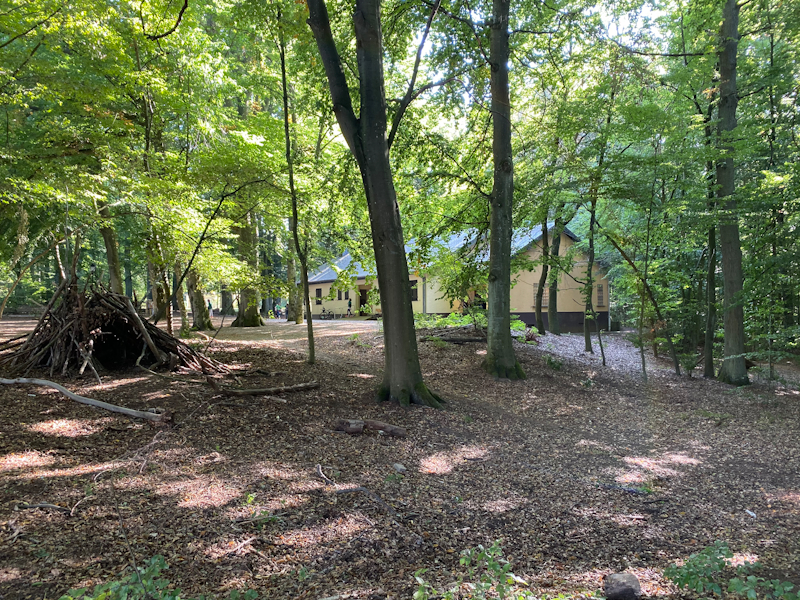
[ iPhone 11 Pro ] - [ iPhone XS ] - [ iPhone X ]
[ S10+(S) ] - [ S10+(E) ] - [ Pixel 3 ]
[ P30 Pro ] - [ Xperia 1 ] - [ G8 ]
I’ve noticed a lot of phones have issues with this shot in terms of their color balance, as sometimes they tend to veer off too much in the grey. The new iPhone 11 Pro here improves in comparison to the XS as it’s able to more properly maintain the greens of the leaves.
The telephoto module takes advantage of a better color accuracy, but here’s extremely evident that it’s a downgrade in terms of detail compared to the XS.
The wide-angle is excellent in term of exposure, however detail is drastically lacking throughout the whole scene, as it’s quite a blurry mess, and very much lagging behind the S10, particularly the Exynos variant.
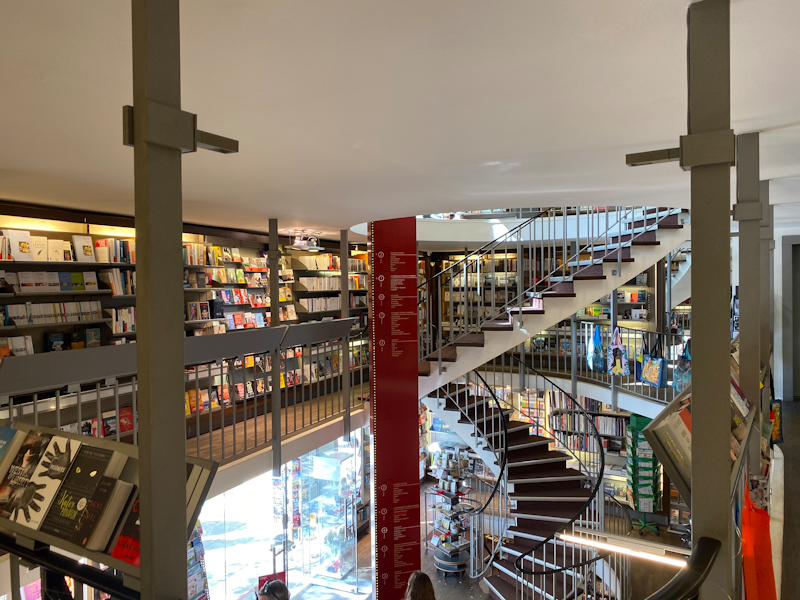
[ iPhone 11 Pro ] - [ iPhone XS ] - [ iPhone X ]
[ S10+(S) ] - [ S10+(E) ] - [ Pixel 3 ]
[ P30 Pro ] - [ Xperia 1 ] - [ G8 ]
Moving indoors with still quite good lighting, it’s again hard to tell apart the iPhone 11 from the XS. The 11 is a bit brighter but other than that they’re pretty much equal. The telephoto shots are also too close to clearly determine which one is better.
The wide-angle is good, but lacks the same sharpness as showcased on the S10. Apple here both on the main and wide-angle seems to have a limited dynamic range compared to the Samsung, as evidenced by the blown out outdoors part of the shot.
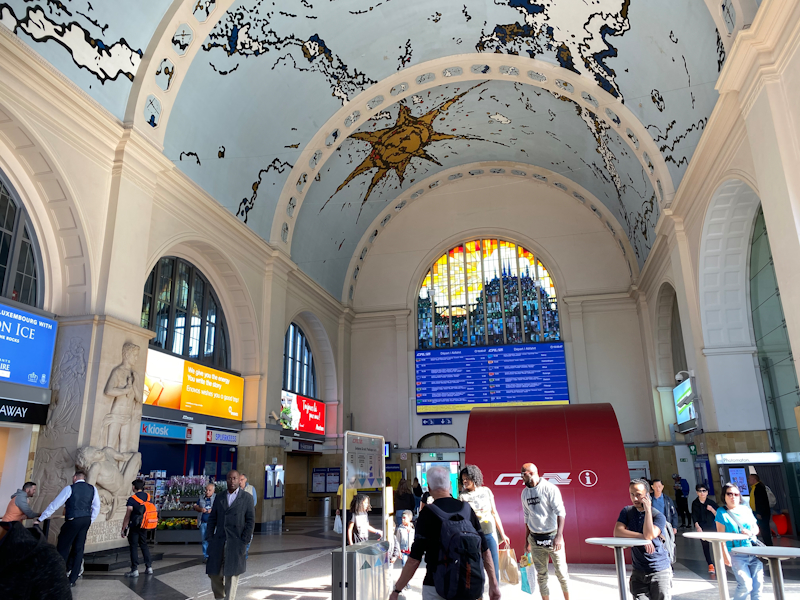
[ iPhone 11 Pro ] - [ iPhone XS ] - [ iPhone X ]
[ S10+(S) ] - [ S10+(E) ] - [ Pixel 3 ]
[ P30 Pro ] - [ Xperia 1 ] - [ G8 ]
The local tone mapping of the HDR of the iPhone 11 improved a bit on the XS, however it’s still not handling some elements correctly, and blowing out the stained glass as well as the orange commercial sign on the left, both which certainly weren’t that bright.
The telephoto on the 11 is a lot better in this shot and the legibility of the signage is definitely better.

[ iPhone 11 Pro ] - [ iPhone XS ] - [ iPhone X ]
[ S10+(S) ] - [ S10+(E) ] - [ Pixel 3 ]
[ P30 Pro ] - [ Xperia 1 ] - [ G8 ]
In indoor shoots again for the main camera it’s a wash between the 11 and the XS. In some areas the 11 fares better while on other textures the XS seems sharper. Both the phones however had issues with color temperature as it’s too warm.
Portrait Mode
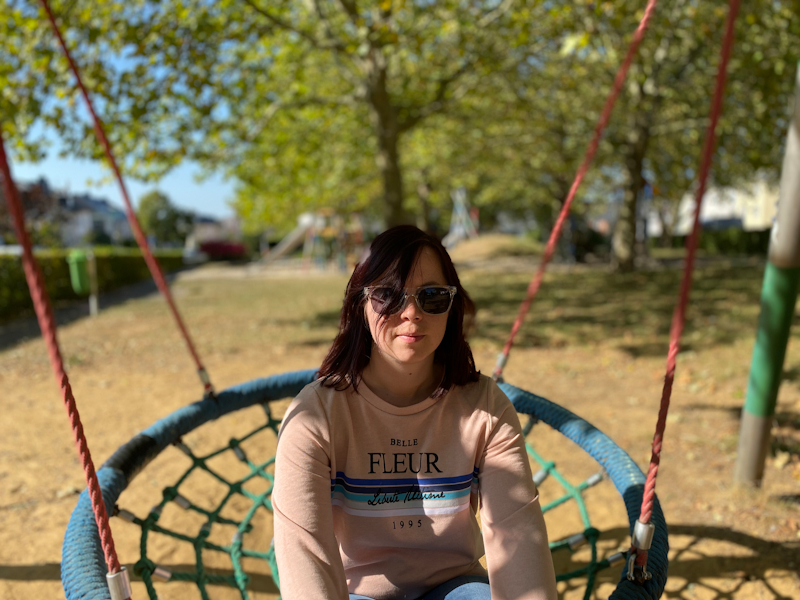
[ iPhone 11 Pro ]
[ iPhone XS ] - [ iPhone X ]
[ Galaxy S10+ (E) ] - [ Galaxy S10+ (S) ]
For portrait pictures, the big new addition for the iPhone 11 series is that you can now capture with the main camera sensor while the wide-angle serves as the depth sensor. It’s still possible and sometimes maybe preferable to use the telephoto lens for portrait shots.
The problem is that it seems that Apple hasn’t really improved the segmentation algorithm on the new iPhones and things can be relatively imperfect. This is particularly visible in the wider-angle shots with the “whiteout” effect, and the results just aren’t very good.
The fun thing about this scene with the swing is we can see the gradual effects of the bokeh on the ropes – that is, we can see that it’s not very gradual on the iPhones as we can clearly delineate where different levels of bokeh blur are applied. This is also partly visible on the Exynos S10, but the Snapdragon S10 has excellent segmentation as well as a smooth and gradual 3D depth blur.
iOS 13.2 Deep Fusion
I had started off the review with iOS 13 including most the daylight pictures, after which I switched over to iOS 13.1 for most testing. Finally, Apple had released a beta for iOS 13.2 and I had to take a look at the new Deep Fusion feature and how it behaves.
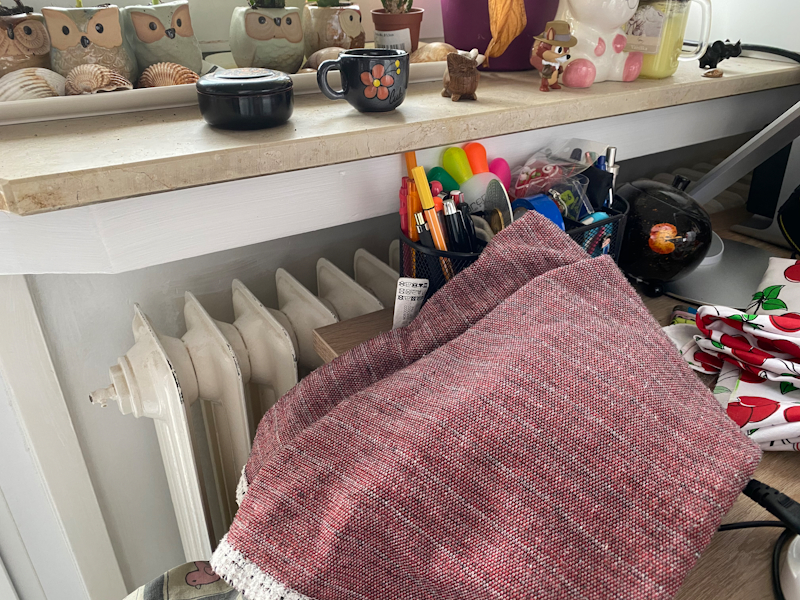
[ iPhone 11 Pro iOS 13.2 ]
[ iPhone 11 Pro iOS 13.1.2 ]
[ Galaxy S10+ (E) ]
I was rather shocked to see the difference in detail that the new Deep Fusion feature can make, and you definitely don’t even have to view the pictures at full resolution to notice a difference in sharpness as well as increased detail.
Essentially Deep Fusion should work similarly to Google’s super resolution zoom technology, just Apple is using it to increase the amount of details captured at the full frame resolution. With the feature enabled the camera is able to bring out finer textures in textiles or rougher materials with fine-grained details that otherwise were blurred out by the camera.
I tried a few shots outdoors, however as Apple mentioned it doesn’t seem to work in coordination with Smart HDR and the last comparison shot doesn’t really show any major difference in detail between iOS 13.1 and 13.2.
Daylight Camera Capture Conclusion – Wait for Deep Fusion retake?
The main selling point of the new iPhones was the addition of the ultra-wide-angle camera module. Indeed, this opens up a totally new capture experience for users and I do think it makes a lot of sense to retain this module on the regular iPhone 11 rather than having a telephoto module. The wide-angle camera had been pioneered by LG a few generations ago, but last year it was Huawei which brought it to the mainstream. And now in 2019 it’s been a must-have for every vendor, and it would have been shocking if Apple hadn’t adopted it.
Quality-wise, Apple's wide-angle module does adequately well, as it’s definitely one of the better modules out there. Still, there’s been many shots where the pictures ended up notably less sharp than on the Galaxy S10 or Huawei’s phones. HDR had also been a bit better for the competition in some scenarios.
On the main camera, improvements for this generation were relatively muted when it comes to the daylight results. There just isn’t very much difference to the XS. We do note that the color temperature is slightly improved, saturation is sometimes more accurately captured, and HDR is able to now handle highlights better. Still I had expected a bit more – sometimes the competition is able to showcase better dynamic range and thus capture more of a scene. The level of detail between the iPhone 11 series and the XS are essentially identical.
The telephoto module changes on the 11 Pro are a bit odd. A lot of the scenes showcased the new phone as producing noisier shots or just having less detail. The optics of the module have changed, as it moved from an f/2.4 aperture to an f/2.0, so I do wonder if that’s the reason for the discrepancy. Sometimes the new module wins out, but other times there isn’t any improvement or even slight regressions. It’s not a deal-breaker or a problem at all, but it’s still odd to see this development from Apple.
Portrait mode on the main sensor is a new addition to the camera experience, but the issue is that Apple really hasn’t improved its segmentation and depth sensing capabilities. Qualcomm’s ISP here looks to be superior as it’s able to produce better bokeh effects.
Finally, Deep Fusion could very well be a game-changer for the camera. I was extremely surprised by the increased quality in sharpness and detail that the new mode brings. I didn’t have sufficient time to properly evaluate it in a wider range of scenarios and against more phones, but it could very well be one of the features that puts the iPhone 11 series ahead of other phones. It’s something we definitely have to revisit in the upcoming Pixel 4 and Mate 30 Pro reviews as we redo the whole camera comparison with iOS 13.2.










242 Comments
View All Comments
BradleyTwo - Monday, October 21, 2019 - link
My apologies if this has been disclosed already, but would it be possible to ask if Apple supplied these phones for testing?The reason I ask is that there is quite a long thread over at a popular Mac rumors forum where a number of us are concerned at the variable screen quality on the iPhone 11 Pro and Pro Max.
Many of us, myself included, have received a suboptimal screen, in that it was a dim, murky yellow display (the less polite of us have called them p-stained), while others have received screens which are not uniformly lit.
We have generally exchanged them to receive marginally better units, a few of which have been perfect, but a disappointing majority of the exchanges are often still below the apparently impressive characteristics of the displays discussed in the review.
As this is not mentioned in the various iPhone 11 Pro reviews, a number of us have formed suspicions that Apple has cherry picked the best screens to supply to reviewers.
A clarification whether Apple did indeed supply the units, or if they were bought off the shelf, would be much appreciated.
techsorz - Monday, October 21, 2019 - link
Apple calibrates each device, this is what XDR essentially is. However this will create better uniformity across displays than make them as different as you say.Dim, murky yellow is probably caused by you not disabling true-tone and auto-brightness. Otherwhise you have a very faulty unit, as this display should be bright enough to nearly burn out your retina. (Exaggeration)
Not uniformly lit could be an error, just return it in this case. Clearly Apple wouldn't supply faulty hardware to anyone on purpose, not testers or consumers.
Andrei Frumusanu - Monday, October 21, 2019 - link
These are Apple review samples, but in our experience and testing they don't differ from commercial models.BradleyTwo - Monday, October 21, 2019 - link
Thank you for the clarification. It would of course be negligent for Apple PR not to ensure reviewers receive fully tested units.I can assure you, however, that when it comes to the screen, the number of less than optimal units being sold at retail is probably higher than you might think. While these are most likely all within manufacturing tolerances for QC purposes, some of them I highly doubt Apple would send to reviewers.
Oh well, at least the 14 day return period provides the opportunity to exchange. The "screen lottery" we call it.
Andrei Frumusanu - Tuesday, October 22, 2019 - link
Apple would have to be very misleading in providing fully sealed units. It's possible that some retail units perform worse but over the years we've never really encountered such a unit.s.yu - Tuesday, October 22, 2019 - link
"It would of course be negligent for Apple PR not to ensure reviewers receive fully tested units."lol! Samsung Fold.
joms_us - Tuesday, October 22, 2019 - link
It is pity though the so-called fastest SoC is not even close to these Android phones which are typically half the speed of fastest desktops. How do you expect people to believe A13 is faster than i-9900K or Ryzen 3950X? Where GeekBiased and jurassic SP2006? LOLhttps://youtu.be/ay9V5Ec8eiY?t=514
https://youtu.be/DtSgdrKztGk?t=423
https://youtu.be/PkVW5eSXKfw?t=115
I'd say cut the crap and show us real-world results not cherry-picked worthless numbers from benchmarking tools.
Quantumz0d - Tuesday, October 22, 2019 - link
The fanboys man they are so blinded by reality, Apple was able to set a perfect world utopian dream for them. Can't fix stupid.I used to run Sultanxda kernel on my OP3 with SD820 processor the SD821 had higher clock speed over 820 but guess what OP screwed it up or Qualcomm didn't provide fix there was Clockspeed crashing at high freq so he disabled it entirely on both big and small. Guess what ? Benches took a massive hit. But UX ? Nope. Infact it improved a lot how is that possible ? I guess Spec and GB only matters right.
Pixel 3 lagged badly due to the RAM issue no one mentions all say its beautiful wonderful amazing. Guess what ? 1080P 60FPS doesn't exist as an option and its auto as Google deems. 4XL no 4K60FPS because less storage. No press mentions.
Coming to this garbage phone. iOS 13 whatever. Same icons, same springboard since 1.1.4 (I used it and JBed it) no desktop no customization to OS. All iPhones on the planet look same just like the brainwash here of ridiculous comparision of a GB (bullshit bench) and Spec score. Masterpiece of corporate koolaid.
Why don't they mention how the Audio format which records is not in Lossless but in AAC crap unlike my V30 does with the 192KHz 24Bit option in FLAC with Limiter and Gain switch or the Video mode which had full manual Pro controls or even the camera having any Manual options. All ASUS, Samsung, LG, Sony, OnePlus, Huawei offer Pro camera forget Pro Video which only LG and Sony do. But No one cares, simpletons only care about A series marketing BS.
The worst of all no Filesystem. $1000 device which doesn't even have a Filsystem usable by end user or has an option to install the apps off the AppStore. Nor any SD expansion slot to be prepared for emergency. But people are riling up and getting worked over the ARM masterrace LMAO with BGA MacBook Pro with 1 USB C port. Bonus is, to develop iOS app you must pay $99 yearly fee AND own that BGA Soldered KB/Touchpad/Battery/SSD macbook because XCode !!
The abomination design. Display mutilation for 3 years while heralding best colors best display LOL. Very funny.
And no 3.5mm jack. Because Apple wanted to make $5bn off revenue from AirPods (Higher than AMDs entire profit) guess what ? Less than 320kbps data rate LMAO. My LG V30 absolutely destroys this phone to oblivion with its ESS9218P DAC processor only found in Top motherboards from ASUS/GB/MSI. Even Vivo Nex decimates this garbage audio iPhone.
Very very funny how even Qualcomm who spent billions of dollars in R&D for their Centriq ARM server processor by even relegating the teams which worked on post 810, full custom Kryo 820 series and dumping all it out because of the Broadcom M&A (Major beneficiary was Apple due to the Hock Tan connection with Apple, he would sell out all LTE patents) impact and no profit in the ARM server market, forget logistics, capex, ROI, x86 emulation AND 64Bit x86 Emulation legacy code with a massive scale of Linux community around.
But we want ARM A series BGA processor which has world class Spec and GB score and beats Mainstream and HEDT LGA processors.
Claps !
Anand2019 - Tuesday, October 22, 2019 - link
Why are you so angry?Quantumz0d - Tuesday, October 22, 2019 - link
Fed up of the unending talk of x86 vs ARM is one hell even AT forums cpu and oc subforum. Whole thread dedicated to worship this talk.Two Apple ruined smartphones by this policy of removing jack and features while raising the price to moon, Other companies also want greed by forcing people to buy BT earphones which sound garbage, horrid longevity (Need to charge everyday) pushing people to buy trash (Beats) thus making whole market saturated with Apple agenda. Look at Google Pixel 4 they also removed offering Dongle, Samsung, OnePlus. Same thing like Apple very greedy.
Three destroyed the laptops with thin and light obsession. And soldered junk with less and less I/O.
Finally 4th - this corporation is built on American values but is a stooge to cash from China thus enabling more totalitarianship while claiming Liberty on US land. Spineless positiin.